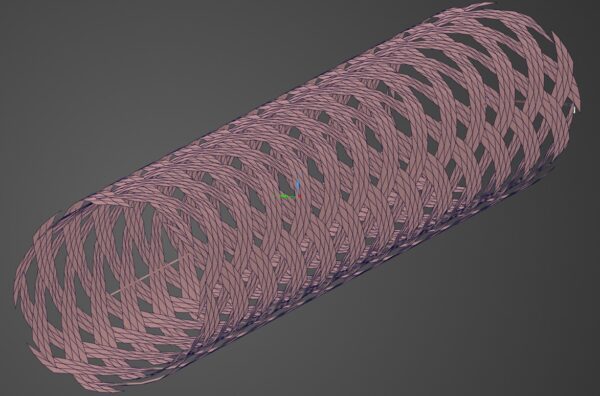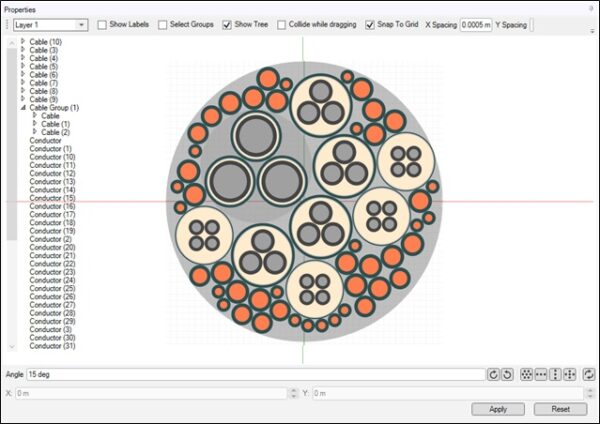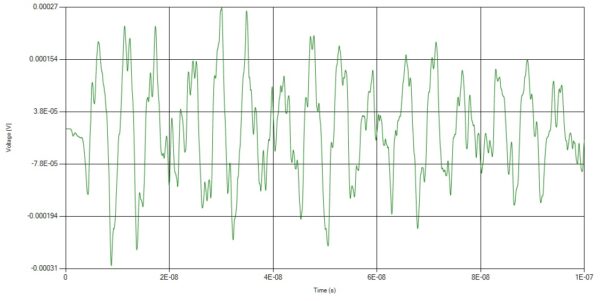Using Ansys software, Simutech Group engineers start with a known cable construction, spec, or datasheets to derive the most applicable models, starting with shield transfer impedance data. An example of one such simulation input might be a copper-tinned overbraid with known coverage.
If measured or stated transfer impedance data isn’t provided, existing libraries of measured data for common shield constructions may be used. Or, an overbraid model with the desired material and coverage may be built and explicitly analyzed to derive a model.
This visual shows an Ansys EMC Plus 3D overbraid model built from specified construction parameters, from which a transfer impedance model for the cable shield can be developed.


























